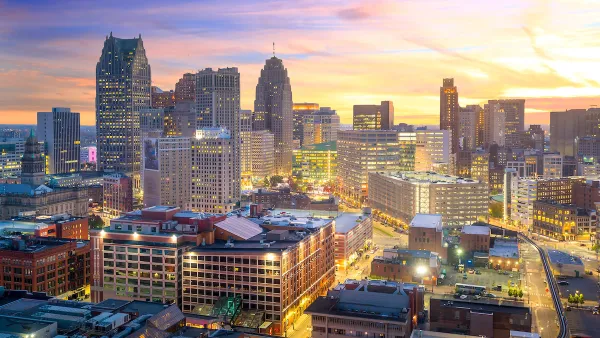Urbanists got excited when new population data from the U.S. Census Bureau suggested bigger growth in cities compared to their suburbs. Eric Jaffe interviews Columbia professor David King on why this isn't necessarily true.
The recent release of the U.S. Census Bureau's latest population data seemed to say that cities are finally growing faster than the suburbs. When it comes to relative growth rates calculated as percentages, that's true. But, Columbia University planning professor David King points out that the absolute numbers show otherwise.
Using Atlanta as an example, Eric Jaffe elaborates, "According to the Census, the downtown area grew at 2.4 percent while the suburbs grew at only 1.3 percent - a clear relative gain for the city. But the suburbs are much more populated to begin with, King reminds us. That means only 10,135 more people settled in the city, while 63,226 more settled in suburbia. In absolute terms, just 14 percent of metro Atlanta growth occurred downtown."
Although the hard numbers may be a disappointment to urbanists, King thinks that the data is still important and requires context. He explains that even a fraction of a percent growth rate could be significant depending on the city. The reason for its growth could be "investing in transit" while another city's reason could be "relaxing the zoning code." He believes that suburbs are similarly difficult to compare when some are "old streetcar suburbs" and others are investing to become "walkable denser communities."
In general, King suggests that "[w]hat we need to do is stop looking at these crude city-versus-suburb divides and we need to start looking at where is the growth actually happening."
FULL STORY: Why You Should Be Skeptical of Statistics on City vs. Suburban Population Growth

Analysis: Cybertruck Fatality Rate Far Exceeds That of Ford Pinto
The Tesla Cybertruck was recalled seven times last year.

National Parks Layoffs Will Cause Communities to Lose Billions
Thousands of essential park workers were laid off this week, just before the busy spring break season.

Retro-silient?: America’s First “Eco-burb,” The Woodlands Turns 50
A master-planned community north of Houston offers lessons on green infrastructure and resilient design, but falls short of its founder’s lofty affordability and walkability goals.

Test News Post 1
This is a summary

Analysis: Cybertruck Fatality Rate Far Exceeds That of Ford Pinto
The Tesla Cybertruck was recalled seven times last year.

Test News Headline 46
Test for the image on the front page.
Urban Design for Planners 1: Software Tools
This six-course series explores essential urban design concepts using open source software and equips planners with the tools they need to participate fully in the urban design process.
Planning for Universal Design
Learn the tools for implementing Universal Design in planning regulations.
EMC Planning Group, Inc.
Planetizen
Planetizen
Mpact (formerly Rail~Volution)
Great Falls Development Authority, Inc.
HUDs Office of Policy Development and Research
NYU Wagner Graduate School of Public Service


























